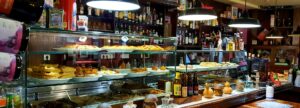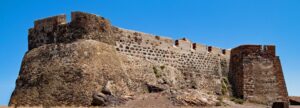Little island lore
Lanzarote is the fourth largest and at the same time the most easterly of the Canary Islands. It is about 125 km from the African mainland and belongs to the province of Gran Canaria. The island extends over a length of 62 km, the width is 21 km. In front of Lanzarote are the islands of La Graciosa, Alegranza and Montaña Clara. The island has around 130.000 inhabitants, 55.000 of whom live in Arrecife, the island's capital.
Characteristic for the geological structure of Lanzarote is its volcanic character. Almost a third of the surface is covered with black lava, cinder and volcanic sand. Approximately 300 volcanoes are distributed over the island. The last eruption took place in 1824. The main massif of Lanzarote is the Timanfaya National Park in the southwest. It was formed by the massive volcanic eruptions between 1730 and 1736. This area, formerly the most fertile on the island, was the focus of these disasters, as a result of which several villages were covered by lapilli and lava flows up to ten meters high.
What is admirable is the effort and perseverance that the islanders have shown to extract income from this soil. Since it rarely rains on Lanzarote, the inhabitants have developed a type of soil cultivation (Spanish: "enarenado") that is unique in the world: In order to add moisture to the sandy subsoil, one thought of the ability of the extremely porous volcanic rock, the lapilli, to maintain humidity suck up. It stores the water at night and slowly releases it to the plant during the day. A layer of it is layered ten to twenty centimeters thick on the earthy subsoil, then the seedling is planted in the funnel-shaped center. The decomposition of the ashes gives the plant natural fertilization for about 30 years.
Particularly noteworthy is the wine-growing principle in the region of La Geria: The vines are planted in pits one to two meters deep and filled with lava ash (Spanish: "picón"), which helps retain moisture and protect the plant from the wind. A semicircular stone wall, which consists of laboriously collected and assembled lava stones, provides additional wind protection.
In addition, cochineal lice are bred on Lanzarote in the area of Mala and Guatiza in the north. There one encounters extensive cactus fields (opuntia), on which the approximately half a centimeter large lice are bred. At "harvest time" these are removed from the plant with the help of a wooden scraper, dried and boiled. Their juice produces a red color, some of which is still used in the cosmetics industry.






